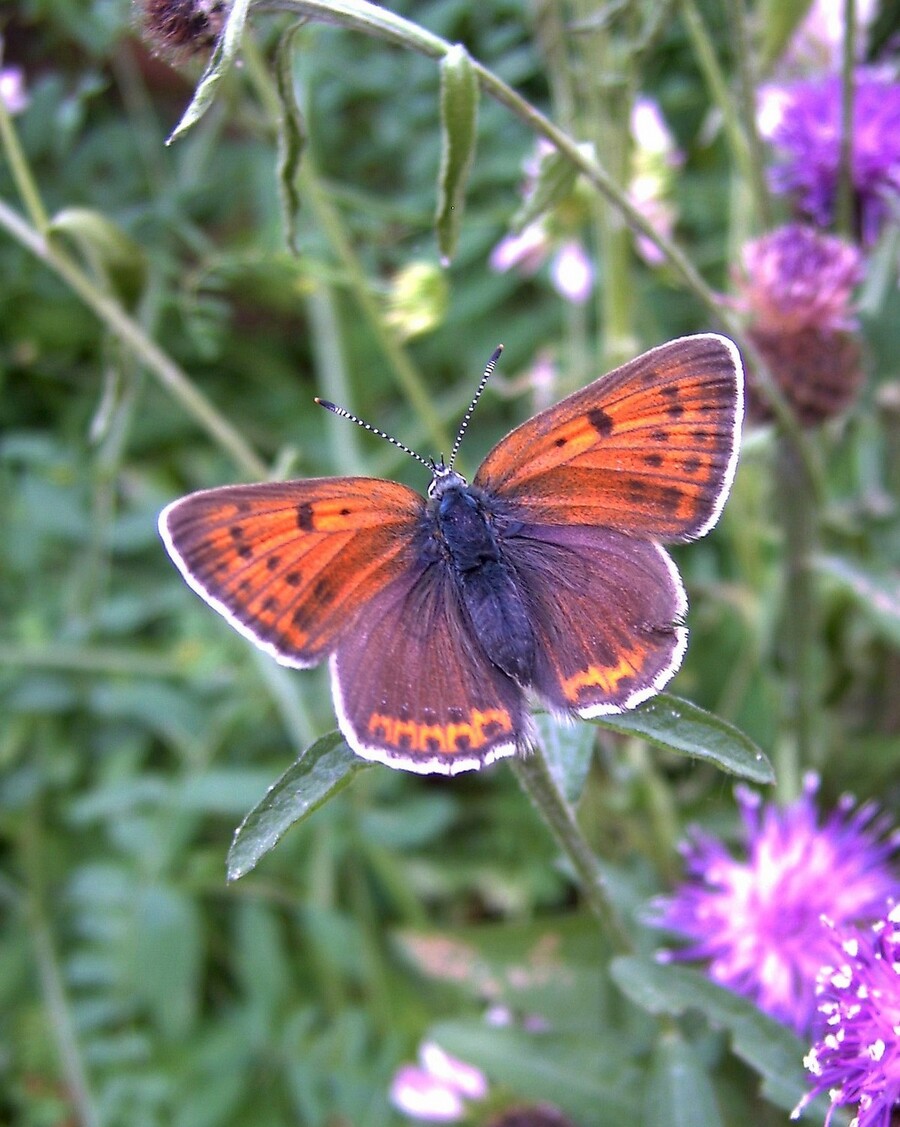Rapid zig-zag flight
Male and female butterflies in the purple-edged copper species are easily distinguishable from one another. The upper side of the male butterfly's wing has a dazzling bright reddish orange shade with a violet shimmer. The upper side of the female butterfly on the other hand has a yellowish brown colour with white edges.They can be seen flying around from May to June. The butterflies of this generation fly in zigzag around their territory. Beside the purple-edged copper, there are other copper types with red-coloured males, for instance the common copper, the scarce copper, the purple shot copper and the large copper.
It can also be found in the Reifenberg meadows It is difficult to define the butterflies' exact habitat, since they can be found in a large range of biotopes. Usually these are moist meadows, rich mountain pastures and low-land moors, but even nutrient-poor grasslands and gravel pits can offer a habitat. Either way it is important that the common sorrel plant can be found here. Since it is here that the purple-edged copper lays its eggs in the flower heads. Later on the sorrel will serve as a food source for the caterpillars.
The butterflies themselves like to suck on common bistort or common yarrow and the meadow buttercup. But the farmers treat sorrel as a weed. This means the purple-edged copper has ever fewer places to lay its eggs. The increasing intense management of the grassland is destroying its habitat with devastating consequences for the butterflies.

